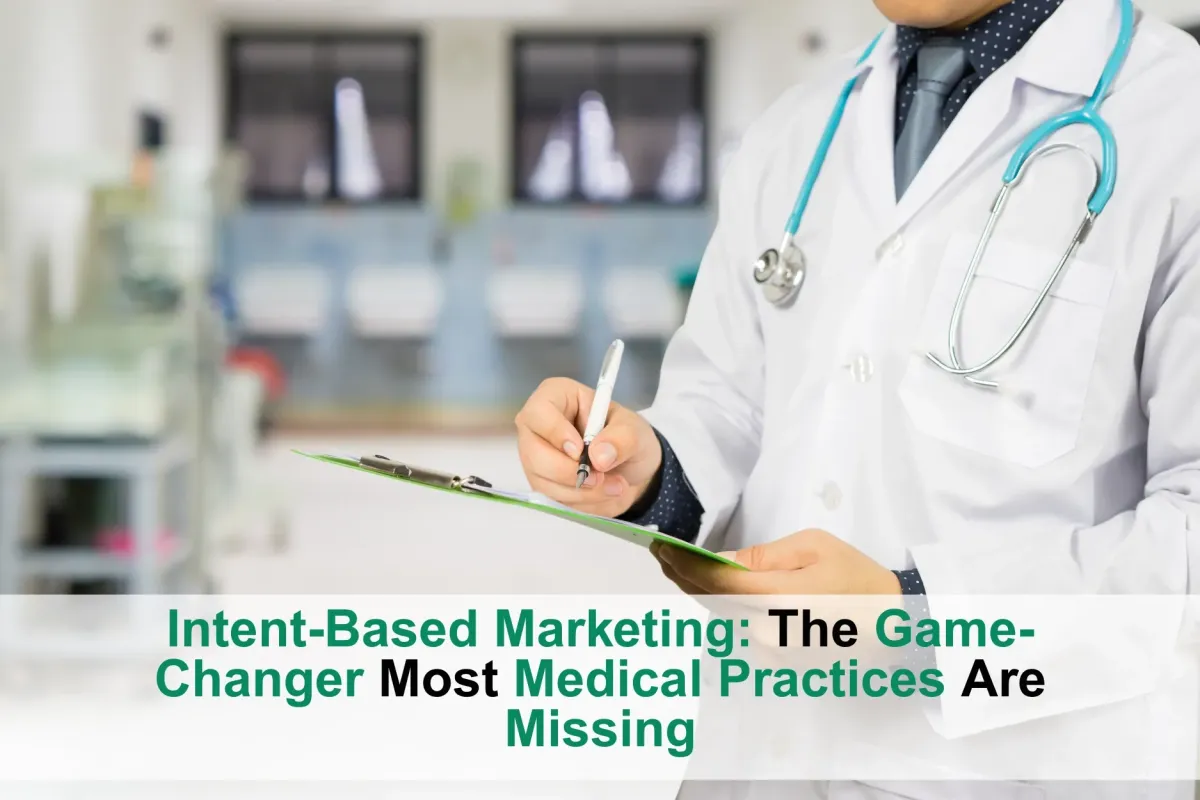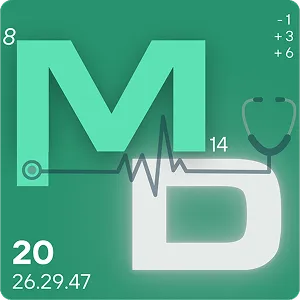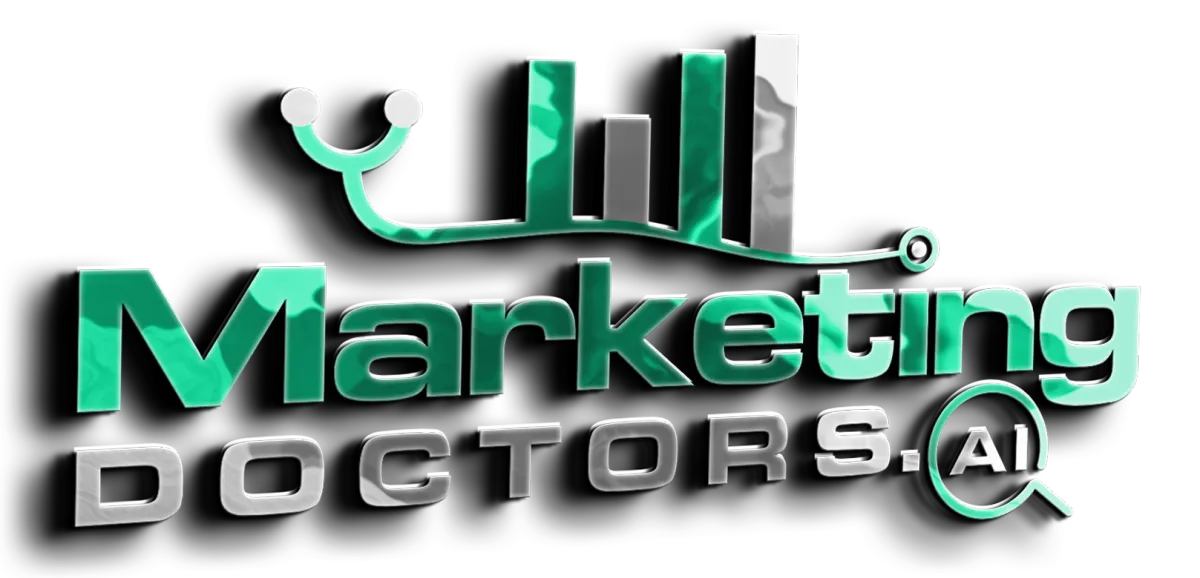
Intent-Based Marketing for Medical Practices: 3-5x Higher Conversions
While most medical practices cast wide nets hoping to catch new patients, there's a revolutionary approach that targets people actively searching for your exact services within the last 7 days. It's called intent-based marketing, and it's transforming how practices acquire patients.
Traditional marketing targets demographics: "women aged 35-55 in your area." Intent-based marketing targets behavior: "people who searched for 'hormone therapy near me' yesterday." The difference in conversion rates is staggering—often 3-5 times higher than conventional approaches.
Here's why intent-based marketing is becoming the gold standard for medical practice growth and how you can implement it in your practice.
Understanding the Intent Revolution
Traditional Marketing Logic:
Target people who might need your services based on age, location, and interests.
Intent-Based Marketing Logic:
Target people who are actively researching your services right now.
The difference is profound. Traditional marketing interrupts people who aren't necessarily thinking about your services. Intent-based marketing reaches people who are already in research mode, actively seeking solutions.
Real Example:
A med spa was spending $3,000 monthly targeting "women 35-55 interested in beauty and wellness" with modest results. When they switched to targeting people who had searched for "Botox," "dermal fillers," and "skin rejuvenation" in their area within the last 7 days, their cost per patient dropped by 52% while conversion rates tripled.
The Science Behind Intent-Based Marketing
The Customer Journey Reality:
94% of patients research online before booking consultations
The average patient visits 4-7 websites before making a decision
73% of patients book with the first practice that provides the information they're seeking
Most patients make decisions within 7 days of beginning their research
The Intent Window:
There's a critical 7-day window when someone first searches for a medical service. During this time, they're most receptive to new information and most likely to book consultations. After this window, they've usually already made their decision.
Types of Intent Data and How to Use Them
Search Intent:
People actively searching for your services
"hormone therapy near me"
"med spa Chicago"
"acupuncture for back pain"
"IV therapy benefits"
Behavioral Intent:
People visiting relevant websites and content
Reading articles about specific treatments
Visiting competitor websites
Researching symptoms or conditions
Comparing treatment options
Purchase Intent:
People showing buying signals
Searching for "cost of" treatments
Looking for "reviews" of specific procedures
Searching for "best" practitioners in their area
Researching "before and after" results
Geographic Intent:
People searching in your service area
Including location-specific terms in searches
GPS data showing visits to medical facilities
Searching for directions to practices
Local business searches
Why Intent-Based Marketing Works So Well for Medical Practices
Higher Conversion Rates: People with search intent are already interested in your services. You're not trying to create interest—you're capturing existing interest.
Lower Cost Per Patient: Because conversion rates are higher, your advertising costs per new patient are significantly lower.
Better Patient Quality: Patients who find you through intent-based marketing are often more committed to treatment because they actively sought out information.
Shorter Sales Cycles: These patients have already started their research journey, so they move from inquiry to booking much faster.
Competitive Advantage: Most practices still rely on demographic targeting, so intent-based approaches often face less competition.
Real-World Implementation Examples
Case Study 1: Wellness Center in Austin
Challenge: High marketing costs ($174 per patient) with long sales cycles
Solution: Implemented intent-based targeting for functional medicine, IV therapy, and hormone optimization searches
Results: Reduced cost per patient to $85 while doubling monthly new patients from 23 to 47
Case Study 2: Holistic Practice in Charlotte
Challenge: Feast-or-famine patient flow with no predictable marketing system
Solution: Used intent-based marketing to target people searching for acupuncture, integrative medicine, and alternative treatments
Results: Stabilized patient flow at 28-32 new patients monthly, booking schedule improved to 2-3 weeks ahead
Case Study 3: Med Spa in Nashville
Challenge: Only 15-20 new patients monthly despite loyal existing client base
Solution: Targeted people searching for specific services like Botox, fillers, and laser treatments
Results: Grew to 42 new patients monthly (180% increase) while reducing cost per lead by 42%
How to Implement Intent-Based Marketing
Step 1: Identify Your Intent Keywords Research what terms people use when searching for your services:
Service-specific searches ("laser hair removal," "functional medicine")
Problem-specific searches ("hormonal acne treatment," "chronic fatigue solutions")
Location-specific searches ("acupuncture Chicago," "med spa near me")
Comparison searches ("Botox vs. fillers," "best wellness center")
Step 2: Create Service-Specific Landing Pages Develop dedicated pages that match search intent:
Page content should directly address what they searched for
Include relevant information, pricing, and social proof
Make booking easy with clear calls-to-action
Optimize for mobile since many searches happen on phones
Step 3: Implement Intent-Based Advertising Use platforms that allow intent targeting:
Google Ads for search intent
Facebook for behavioral and interest-based intent
Retargeting for people who visited your website
Local SEO optimization for geographic intent
Step 4: Develop Intent-Based Content Create content that matches different stages of intent:
Educational content for early research stage
Comparison content for evaluation stage
Detailed service information for decision stage
Patient testimonials and results for confirmation stage
Step 5: Track and Optimize Performance Monitor key metrics to improve results:
Conversion rates by intent type
Cost per patient by keyword
Patient quality and lifetime value
Time from first contact to booking
Common Intent-Based Marketing Mistakes to Avoid
Mistake 1: Using the same landing page for all intent types Solution: Create specific pages that match search intent
Mistake 2: Focusing only on service names instead of problems Solution: Target both service searches and problem-focused searches
Mistake 3: Ignoring local intent signals Solution: Include geographic targeting and local SEO optimization
Mistake 4: Not following up quickly with intent-based leads Solution: Implement rapid response systems for high-intent prospects
Mistake 5: Competing on broad, expensive keywords Solution: Focus on specific, long-tail intent keywords with lower competition
The Future of Medical Practice Marketing
Intent-based marketing represents a fundamental shift from interruption-based advertising to invitation-based marketing. Instead of interrupting people with ads, you're inviting people who are already interested to learn more about your services.
This approach is particularly powerful for medical practices because:
Healthcare decisions are research-intensive
Patients value finding the right practitioner over finding the cheapest option
Trust and expertise matter more than convenience
Patients are willing to wait for the right provider
Measuring Intent-Based Marketing Success
Key Performance Indicators:
Cost per patient (should decrease)
Conversion rate from inquiry to booking (should increase)
Patient lifetime value (often higher with intent-based patients)
Time from first contact to booking (should decrease)
Patient satisfaction and retention rates
Success Timeline:
Month 1: Implementation and initial optimization
Month 2-3: Conversion rate improvements become evident
Month 4+: Sustained lower costs and higher patient quality
Ready to Capture High-Intent Patients for Your Practice?
Intent-based marketing isn't just a trend—it's the most efficient way to connect with patients who are actively seeking your services. The practices implementing these strategies now are gaining significant competitive advantages over those still using outdated demographic targeting.
We help medical practices identify and capture high-intent prospects in their local markets. During a consultation, we can show you exactly who's searching for your services in your area and how to reach them before your competitors do.
Schedule your consultation to see your local intent data:
Call: (888) 964-0456
Text: (866) 325-5885
Online: marketingdoctors.ai/contact
Let's work together to connect your practice with patients who are actively searching for exactly what you offer.


